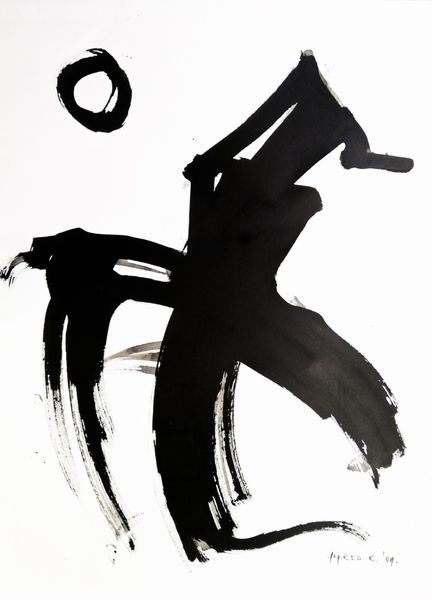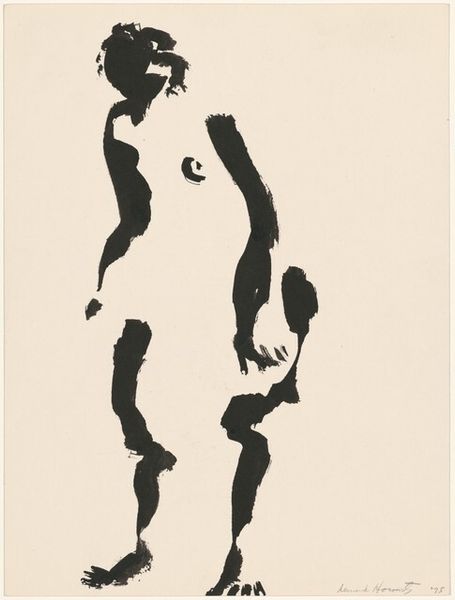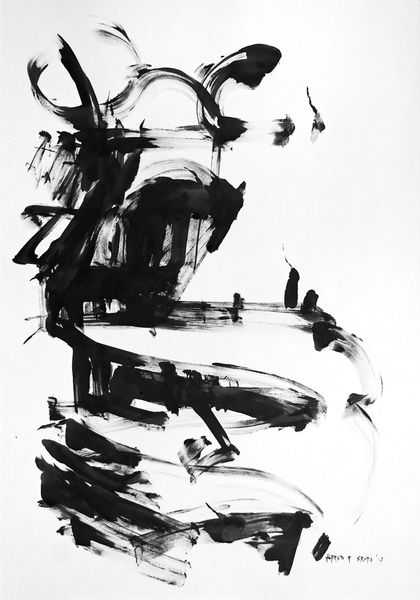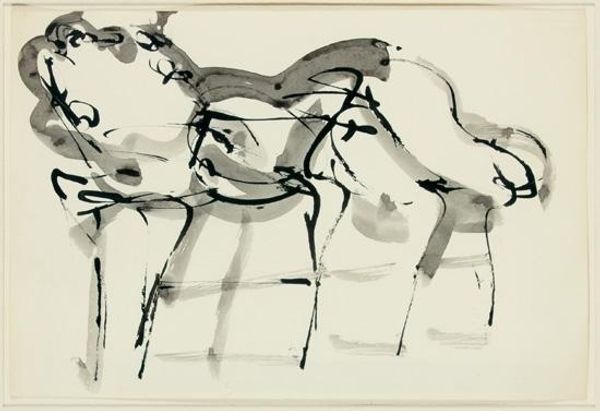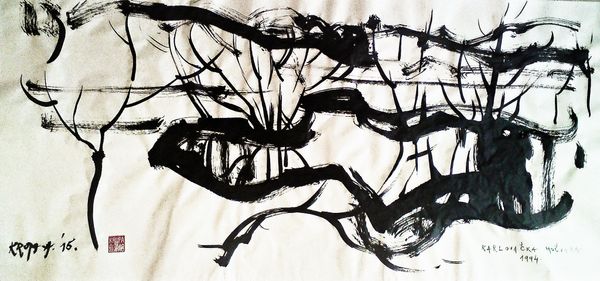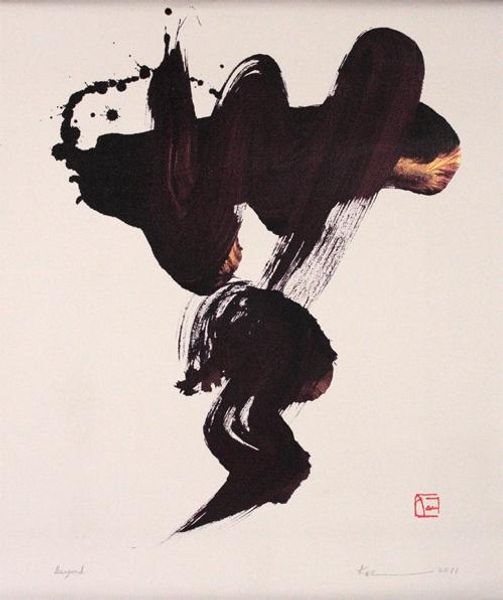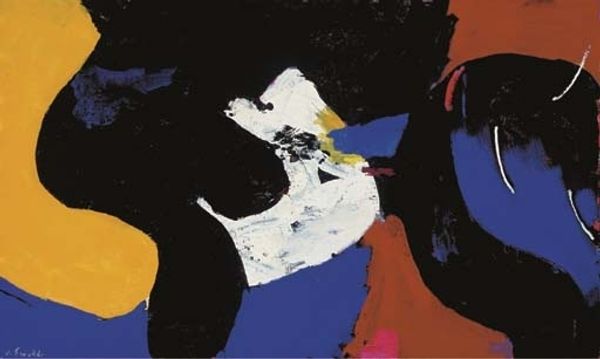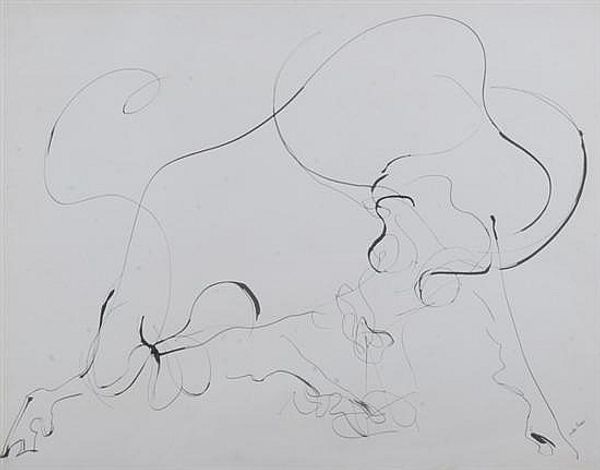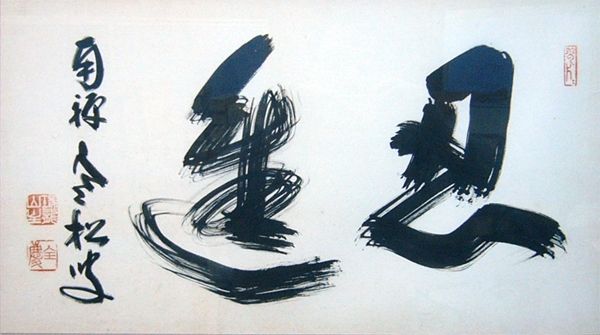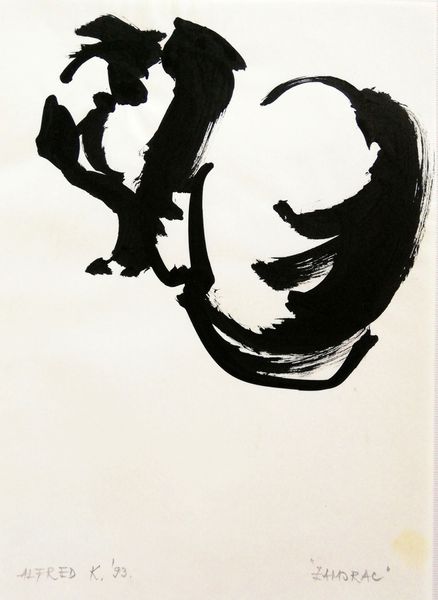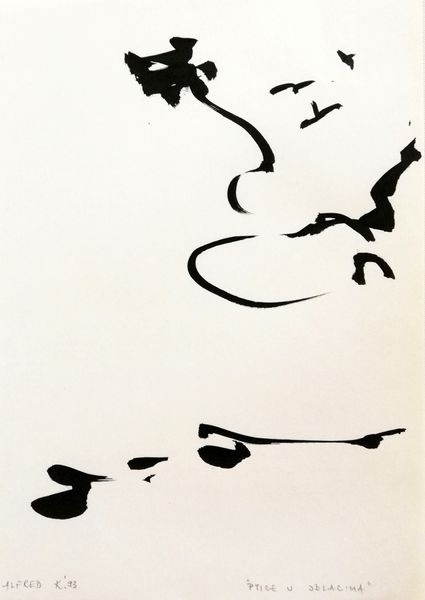
drawing, ink
#
drawing
#
figuration
#
ink
#
abstraction
#
portrait drawing
#
nude
#
modernism
Copyright: Reuben Nakian,Fair Use
Curator: "Nude 1," an ink drawing created by Reuben Nakian in 1970. What are your initial thoughts? Editor: It strikes me as powerful yet vulnerable. The heavy black ink almost overwhelms the figure, but there's a real intimacy to the pose. A sense of unveiling, but also concealment. Curator: Nakian, a significant figure in mid-20th-century American art, often returned to the female form, seeing it as a vessel for both classical ideals and modern anxieties. This work arrives towards the end of his career. How do you think this informs his take on the nude here? Editor: Well, the boldness of the line and the stark contrast...it evokes something ancient, almost like a Cycladic idol. But it’s filtered through a modern sensibility, an urgency perhaps? Curator: The cultural impact of art shifts during the 1960s. There is greater exploration of sexuality and gender fluidity, that creates tensions but also freedoms for artists, certainly Nakian must have perceived it, and expressed in the work, would you agree? Editor: Precisely. The way the figure melts into the abstract background--the lack of concrete detail– it could signify a shifting sense of identity, breaking from classical conventions, a universal human spirit beyond specifics. Curator: These strong strokes of ink. It is also reminiscent of gestural abstraction. And yet, we still read the body—breast, hip, shoulder—as form emerging from a sea of ink, but abstracted beyond a realistic nude. What reading of a more general artistic exploration of women during that period might the piece reflect? Editor: It speaks to the complexities surrounding women's visibility and agency. The figure is presented, yet partially obscured, demanding that we look deeper than the surface. The strength of the form suggests resilience and defiance, against objectification perhaps? Curator: Nakian was criticized for not being overtly political in his art but by depicting the female form with such a blend of vulnerability and power, do you feel he inadvertently engaged with second-wave feminism through visual means? Editor: I think you have a point, even without explicitly addressing social issues, he provides a lens into the human experience that's informed by cultural change, reflecting an artistic interpretation of broader socio-political awareness. Curator: Nakian invites a discourse about what it means to portray the body. Editor: Indeed, about how the symbols and myths we carry shape perception. Thanks for illuminating this evocative drawing!
Comments
No comments
Be the first to comment and join the conversation on the ultimate creative platform.
